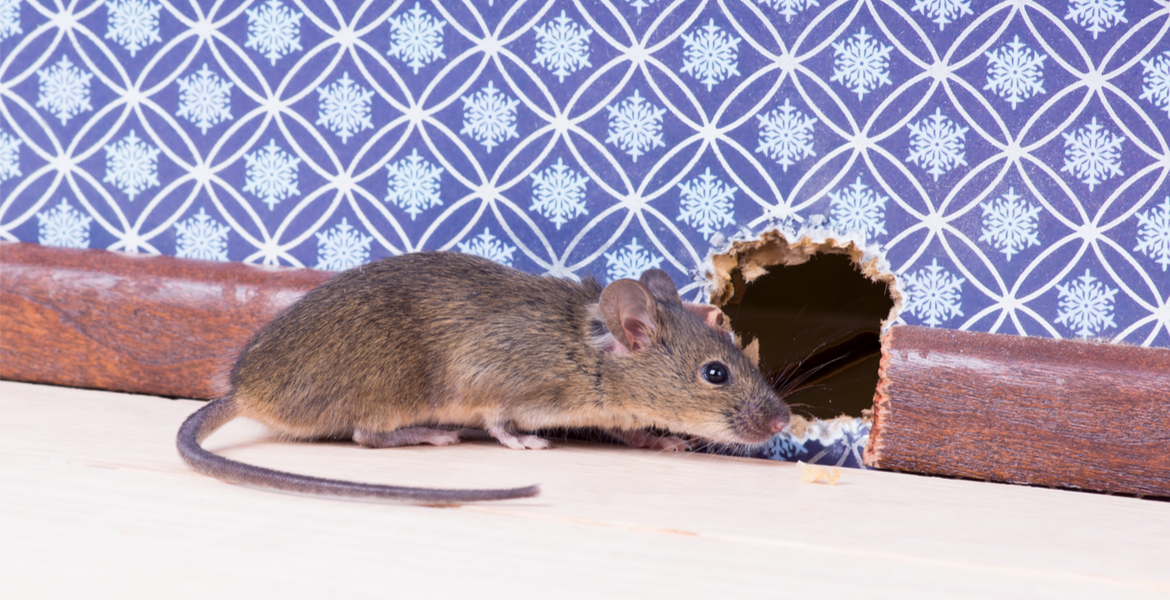
There’s a mouse in the house
Thursday, October 8, 2020
They typically live near people throughout the year, but with cooler weather arriving, many mice are looking to move a little closer.
Mice scramble to locate shelter before winter hits, said Kevin Shelton, Oklahoma State University Extension associate specialist and coordinator of OSU’s Pesticide Safety Education Program.
“The house mouse, also known as Mus musculus, primarily is nocturnal, but it isn’t uncommon to see them during the daylight hours,” Shelton said. “They aren’t welcome guests because they are a nuisance and will cause damage by chewing on wiring and drywall in a home. They also contaminate food, grain and other stored products. Damage is caused by chewing, as well as urine and fecal matter.”
There are a few telltale signs of a mouse in the house, said Gina Peek, OSU Extension housing and consumer specialist.
“Mouse droppings are a good indication of an infestation and typically are found along runways or feeding areas. Also, tracks may be seen on dusty surfaces or shelves where flour may be stored,” Peek said. “Consumers also may find gnaw marks on boxes or bags of food, on doors or other surfaces in the home. Keep an eye out for smudge or rub marks. Mice leave behind oil and dirt from their fur on frequently traveled routes.”
Mice also can be heard running across upper surfaces of ceilings and climbing within walls. Also, watch for nests in attics, basements, storage sheds and garages.
Peek suggested a few simple steps for mouse control:
- Eliminate food and water sources.
- Household garbage should be removed from the house and placed in an outside bin with a secure lid.
- Pet owners should feed pets only what the animal can eat at one time.
- Store pet food in a container with a tight-fitting lid.
- Fix indoor and outdoor water leaks.
- Eliminate breeding and nesting sites.
- Store firewood away from the house and off the ground.
- Remove rubbish and trash from outside the home.
- Remove clutter inside the home.
Shelton said it is important to develop a control program to help cut down the mouse population.
“Focus first on reducing food sources, pest entry points and places where mice can take refuge. Consider traps as a last resort,” he said. “They may seem rather ‘old school,’ but snap traps are an effective method of rodent control. Typically, mice have small territories, so traps must be placed in those areas in order to be effective. Trap placement and orientation are important, so be sure to read the package directions.”
Live-catch traps also can be purchased commercially and baited with food or rodenticide, Shelton said. In addition, mice are nibblers, so it is best to put a little bait in several bait stations to increase consumption.
“I would suggest using several different kinds of bait until a preference is detected, then use that one until feeding stops,” he said. “Always use an enclosed bait station and never place it where children or pets can access it.”
Although commercially available, glue traps do not discriminate on what they catch, and can be a danger to animals that are not the intended target, Peek said.
“Animals that touch a glue trap immediately are caught and stuck to the board, which usually results in a slow death by starvation or suffocation,” she said. “It’s best to avoid using these traps.”
Consumers have likely seen ultrasonic devices advertised as a method to repel mice. Although mice are timid and will run away from many sounds, they will get used to the ultrasonic devices in a day or two.
“Mice aren’t protected by law and may be controlled using any pesticide registered by federal or state authorities for this purpose, or by mechanical methods,” Shelton said. “Before the cold weather hits, take some time to look around your home for areas that would attract mice and to seal up any openings that would provide access to your home.”
MEDIA CONTACT: Trisha Gedon | Agricultural Communications Services | 405-744-3625 | trisha.gedon@okstate.edu
